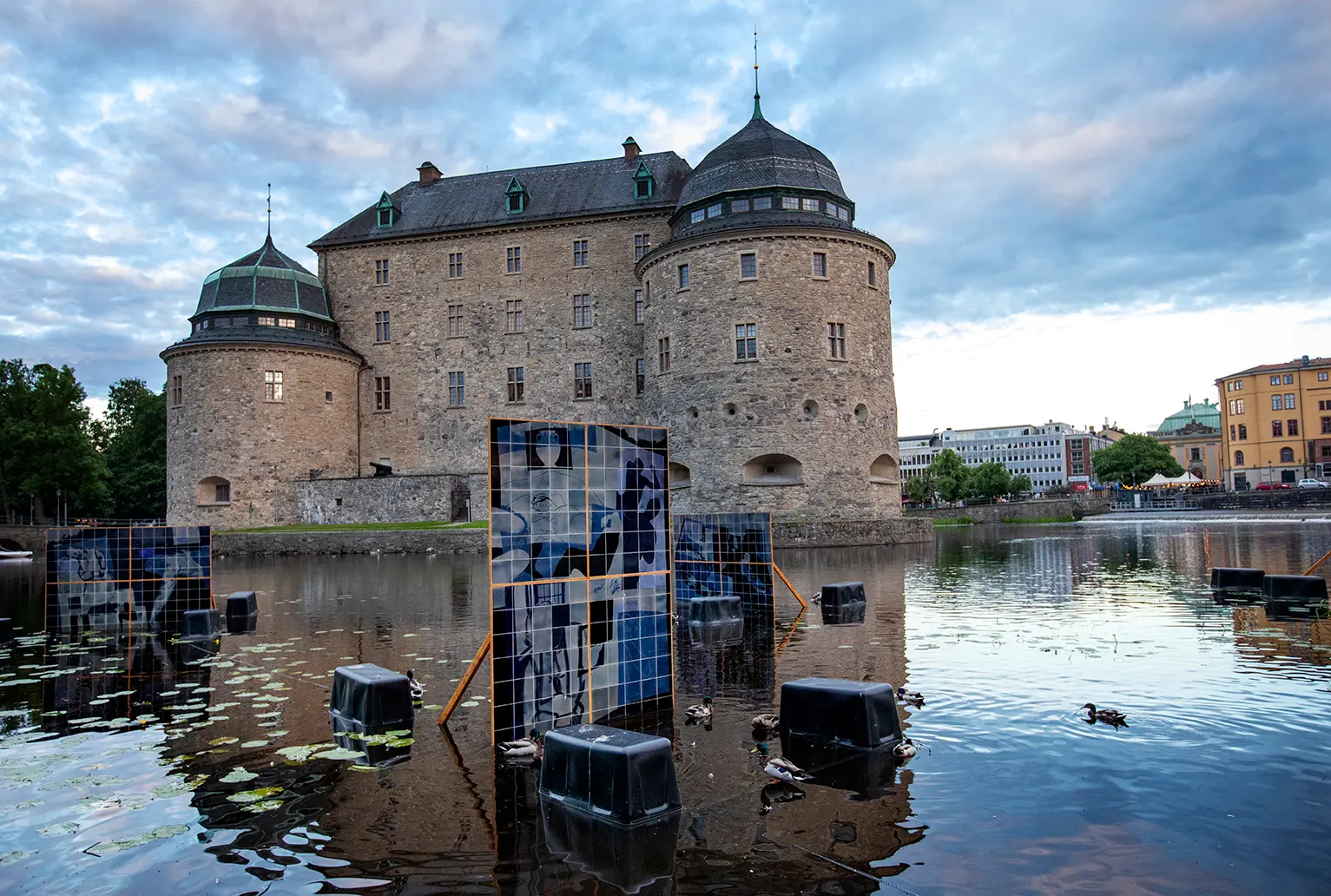- Start
- / Arkiv OpenArt
- / OpenArt 2022 - In English
- / Deságua (The river flows fastest towards the end)
Deságua (The river flows fastest towards the end)
Lucas Odahara

Photo: Sofie Isaksson

Photo: Sofie Isaksson
In and by the water, Odahara’s artworks are presented just where water itself seems to liberate change. Large paintings, on walls of ceramic tiles, show sleeping male bodies next to vessels of water. Motifs by masters throughout the history of art, such as Rembrandt, David Hockney and Lucian Freud, are role models for how the bodies are depicted. Odahara questions the role that is traditionally associated with masculinity in the West. He comments on the fact that environments with water have historically been places for male sexuality that does not follow the heteronormative. What does the river take with it, what does it want, where does it lead to, wonders Odahara. The river flows most quickly at the mouth, the end, he asserts. A bold interpretation is that broad-mindedness is on its way to winning out.

Photo: Sofie Isaksson
Artwork: Deságua (The river flows fastest towards the end)
Artist: Lucas Odahara
Number on the map:
Material: Wood, ceramic tiles, glaze
Location: In Svartån by Örebro castle
Senast uppdaterad:
Publicerad:
Tack för ditt svar!
Berätta gärna vad vi kan göra bättre på den här sidan för att förbättra webbplatsen! Vi har ingen möjlighet att svara, men dina synpunkter är värdefulla för oss. Tänk på att inte skicka in personuppgifter. Om du vill ha svar på en fråga kan du istället använda formuläret ”Lämna en synpunkt”.
Om du ändå skickar in personuppgifter via detta formulär hanteras uppgifterna av Kommunstyrelsen och kan eventuellt lämnas vidare till annan verksamhet inom Örebro kommun i syfte att förbättra vår service.
Här hittar du mer information om hur vi hanterar personuppgifter.
Tack för ditt svar!
Du har nu hjälpt oss att förbättra våra webbplatser.
Kontakta OpenArt
-
Namn: OpenArtE-post: openart@orebro.se
Kontakta Örebro kommuns servicecenter
Telefon: 019-21 10 00
Öppettider: Vardagar kl. 8–16.30
Besöksadress: Näbbtorgsgatan 10
Öppettider: Vardagar kl. 10–16
E-post till servicecenter
